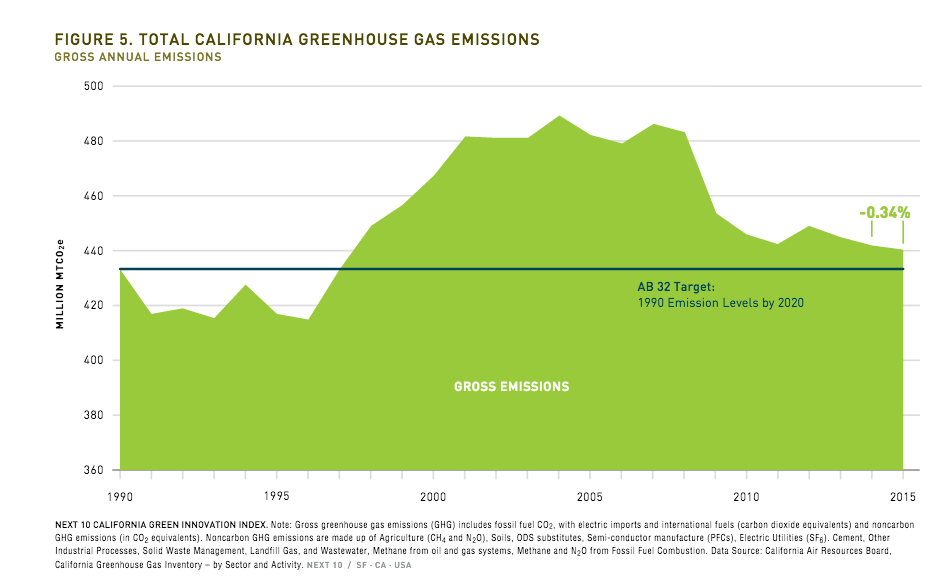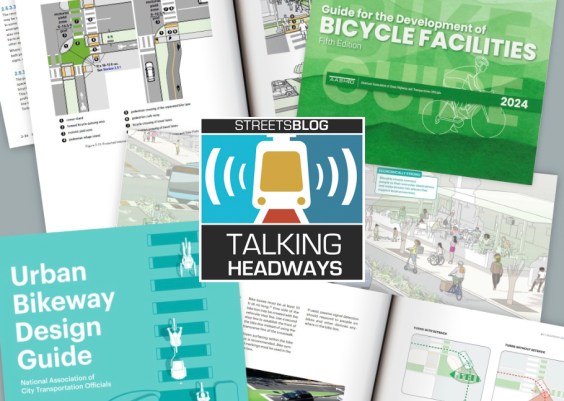Californians need to cut down how much we drive. That's one conclusion reached from a perusal of the ninth annual California Green Innovation Index, a report from Next 10 and Beacon Economics that analyzes the effects of California's climate policies. The report is a deep dive into the state's approach, including a history of cap-and-trade and emissions.
It shows that the economy is being helped, not hurt, by climate change policies. California's economic growth from 2006 to 2015 is nearly double that of the U.S. as a whole, and at the same time per capita emissions have decreased. The state has greatly increased its reliance on renewable energy sources. Overall emissions are going down, and we are nearing our preliminary 2020 emission reduction target—all of which is great news.
But the report also shows that in the past few years, driving has increased and transit ridership has fallen, leading to higher emissions from the transportation sector. Because that sector accounts for almost forty percent of total emissions, its growth there is slowing the overall decrease.
There are many culprits here. They include woefully inadequate transit service and investments; relatively easy and fast service from ride-hail companies—leading to increased driving for paid trips as well as drivers waiting for riders; low gas prices; few affordable places to live in the urban areas where many jobs are located, leading to long commutes; California's investment policies that encourage driving by providing plentiful fast, wide highways and abundant free parking; and freight employment policies that make it easy for companies to leave the responsibility—and expense—of upgrading diesel engines to the individuals who drive the trucks.
The increase is happening despite state policy efforts like increased investments in bike lanes and transit and encouraging adoption of zero emission vehicles—and despite the growing proportion of efficient, clean vehicles.
As we move past 2020, California's emission targets will become stricter and require greater reductions. Any way you cut it, to meet climate goals Californians are going to have to drive less. But few policy makers are willing to publicly endorse policies that discourage driving, and even the Next 10 report offers no solutions beyond a need to innovate.
But there are some things that could be done, and ought to be discussed. A few suggestions:
- Make drivers pay the true cost of driving. Charge for parking. Charge for driving on highways. Put the money raised into improved transit. Raise the gas tax—oh, wait.
- Minimize investments in highways, on- and off-ramps, flyovers, throughways—anything that purports to speed up car traffic. Turn the majority of existing highway space over to transit.
- Maximize investments in making short trips safe and pleasurable for walking or biking or skateboarding or hoverboarding or wheelchairing.
- Regulate ride-share companies. Force them to provide data about miles driven, and charge them for those miles. Put the money raised into better transit.
- Invest so heavily in transit that it becomes an attractive alternative to driving for many.
- Provide safe, enjoyable places to walk, wait for buses, and ride bikes—everywhere. Keep cars on the outskirts of places where people want to be: shops, housing, job centers. Make every parking lot a safe place for people to walk.
- Make car driving inconvenient and second rate. Use marketing to discourage driving instead of discouraging walking. Make car drivers feel like the mooches they are.
- Force large employers to meet strict, and very high, targets for eliminating solo car commutes. Make state employees, and especially those in charge of state agencies, get to work by transit, bike, or walking. Don't provide free parking or car subsidies or mileage fees for anyone, for any reason.
Too much? One can dream.





